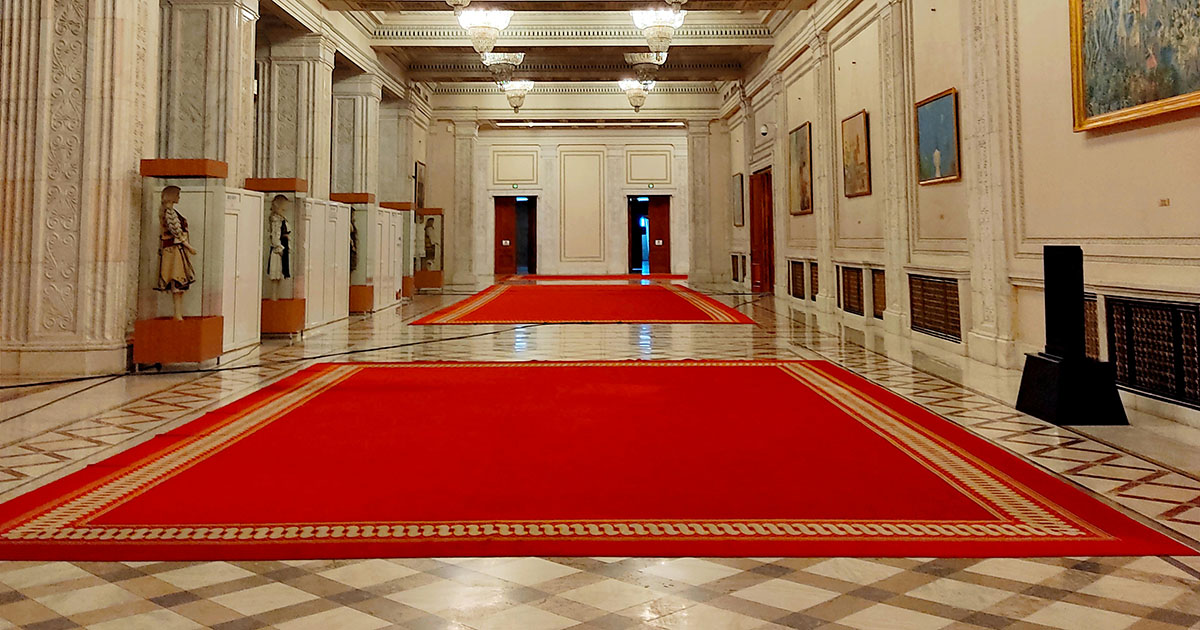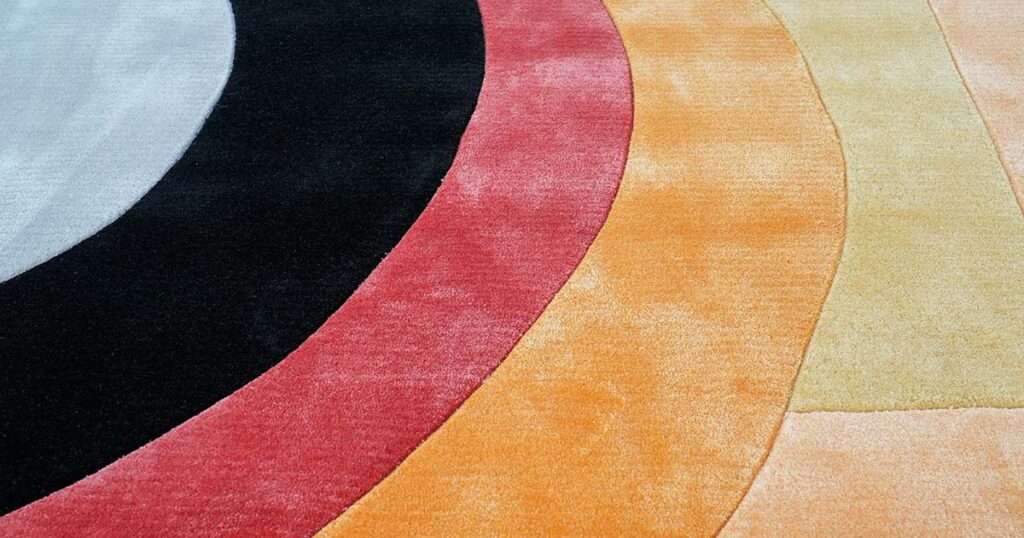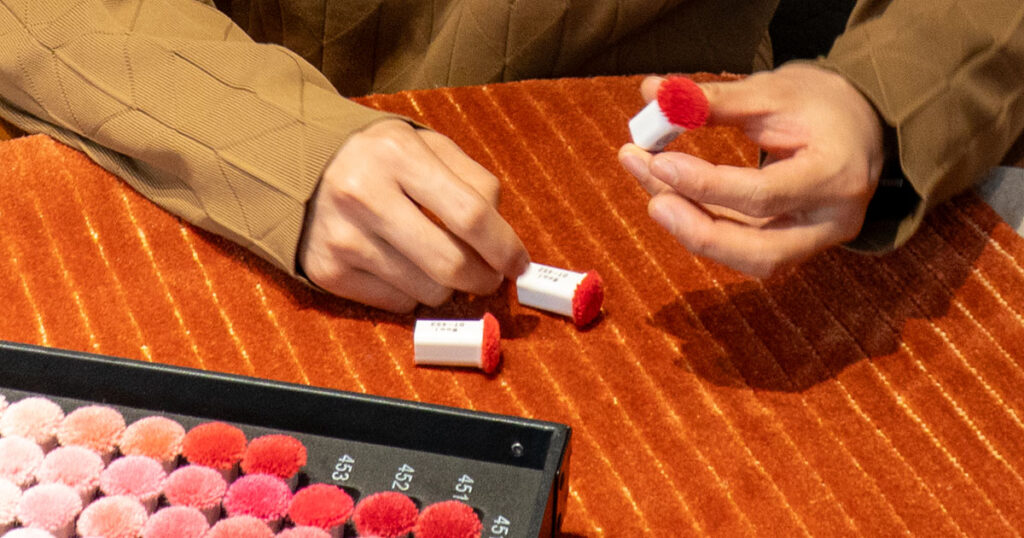Red rugs create instant warmth and character in any space. Whether you’re drawn to a traditional Persian design or a sleek modern style, understanding the basics will help you make the best choice.
This guide walks you through everything you need to know about red rugs – from color variations to styling tips.
Common Shades of Red in Rugs
Not all red rugs are created equal. Each shade carries its own mood and impact on your space.
Scarlet and Crimson
These bright, pure reds create instant energy in a room. A scarlet rug works perfectly as a focal point in neutral spaces but can be overwhelming in large areas. Use these vibrant reds as statement pieces rather than wall-to-wall coverage.
Burgundy and Wine
Derived from the color of red wine, burgundy adds sophistication and richness. These deeper reds create cozy, intimate atmospheres and have a practical advantage: they hide stains remarkably well, making them ideal for dining areas or high-traffic spaces.
Maroon
With more brown tones than burgundy, maroon feels more earthy and traditional. This shade appears frequently in classic Persian and Turkish designs, making spaces feel grounded and inviting.
Rust and Terracotta
These reddish-orange-brown shades bring rustic charm to any room. Common in tribal rugs and bohemian styles, rust tones feel casual and natural. They blend easily with wood furniture and other earth tones.
Cherry and Ruby Red
Medium-bright cherry red and jewel-toned ruby provide the perfect balance between energy and luxury. Cherry red adds cheer without being neon-bright, while ruby’s depth creates a sense of richness.
Symbolic and Psychological Meanings of Red
Red does more than just look beautiful—it actively shapes how you feel in a room.
Energy and Warmth
In interior design, red stimulates energy and warmth. Studies show it can actually raise heart rate and even stimulate appetite, which explains why red often appears in restaurant décor. A single red element, like a rug, makes a powerful impact.
Cultural Significance
In many rug-weaving cultures, red carries important symbolic weight. Persian rugs frequently feature red as a dominant color, symbolizing luck, happiness, and wealth. Across the Middle East and Central Asia, red often signifies courage, prosperity, or protection.
Mood Variations by Shade
Different red tones evoke different emotional responses. Bright reds feel playful and energetic, while darker reds create sophisticated, intimate spaces. Rusty reds bring stability and earthiness, and purplish reds add creative flair.
Red Rugs in Residential vs. Commercial Spaces
At Home
In residential settings, red rugs serve as cozy focal points that tie a room together.
Living and Family Rooms
A red rug instantly adds warmth and creates a natural gathering space. It works particularly well under seating arrangements, drawing people together for conversation.
Dining Areas
Since red stimulates appetite, it’s perfect under dining tables. Just ensure the rug extends far enough that chairs don’t catch on the edges when pulled out.
Bedrooms
While bright red might feel too energetic for sleep, deeper reds like burgundy create a cocoon-like atmosphere, especially when balanced with neutral elements elsewhere. Children often love vibrant red rugs in playrooms or bedrooms.
Entryways and Hallways
A red runner in your entryway makes a striking first impression. Deep red patterns hide dirt from foot traffic better than light colors, making them practical choices for high-traffic areas.
In Commercial Settings
Red rugs serve different purposes in business and hospitality environments.
Making an Impression
Hotels and theaters frequently use red carpets to signal luxury and create drama. In offices or boutiques, a red rug in reception areas projects confidence and creativity.
Encouraging Interaction
Hospitality design leverages red’s ability to stimulate appetite and social energy. Restaurants and hotel lounges often feature deep red carpets to create rich, intimate experiences that encourage dining and conversation.
Balancing Professionalism
Conservative business settings might use red more sparingly. However, executive offices or conference rooms often feature deep red oriental rugs to convey power, stability, and sophistication.
Practical Considerations
Commercial spaces experience heavier foot traffic, making darker patterned reds smart choices. Complex patterns conceal footprints, spills, and wear, which explains why many hotels and casinos feature red-patterned carpets.
Pairing Red Rugs with Your Décor
The trick to incorporating a red rug successfully lies in how you coordinate it with the rest of your room.
Start with the Rug
Designers often recommend beginning with the rug when decorating a room, especially for bold pieces. Many red rugs, particularly Persian styles, include other colors in their patterns. Pull these accent colors from the rug and repeat them elsewhere in your room for a cohesive look.
Wall Colors
You have two main approaches to walls with red rugs:
- Neutral walls (white, off-white, gray, beige) create a safe backdrop, letting the rug be the star. White walls make the rug’s color pop dramatically, while light gray or taupe softens the contrast.
- Richly colored walls can complement a red rug when chosen carefully. Deep hues like charcoal, navy, forest green, or muted teal create a cozy, enveloping atmosphere alongside red.
Furniture Choices
Balance is key when selecting furniture to pair with a vibrant red rug. Since the rug draws attention downward, consider keeping large furniture pieces more neutral. This doesn’t mean boring—furniture with interesting shapes or textures still adds character without competing with the rug.
For more colorful options, choose shades from the rug’s pattern or deliberate complementary colors. Teal or turquoise sofas can look stunning with red rugs, creating dynamic, unexpected combinations.
Wood and Metal Finishes
Red rugs pair beautifully with wood furniture, especially medium to dark stains with red or orange undertones. Mahogany or cherry wood dining tables echo the rug’s warmth for a cohesive look.
Metal accents matter too: warm metals like brass or gold enhance the luxury of red tones, while chrome or black metal adds a cool, modern counterpoint.
Accessories and Accents
Once your major elements are positioned, accessories tie everything together. Repeat the rug’s red in small doses elsewhere in the room—throw pillows, artwork, vases—so the color doesn’t feel isolated. Just don’t overdo it; one or two echoes create sufficient harmony.
Popular color pairings with red include:
- Blue (from navy to turquoise)
- Green (especially olive or sage with brick red)
- Gold or mustard yellow (particularly with burgundy)
- Black and white (for modern contrast)
Interior Styles That Go Well with Red Rugs
Red rugs adapt remarkably well to various design aesthetics.
Traditional/Classical
In traditional interiors, red Persian or Oriental rugs feel perfectly at home. Their intricate patterns and rich tones add instant heritage to formal dining rooms, libraries, or Victorian-inspired spaces. These rugs complement antique or reproduction furniture, dark wood, and ornate details.
Bohemian
Bohemian style celebrates layered textiles and global influences, making red rugs natural additions. Faded vintage Turkish kilims or bright Moroccan Berber rugs with red elements create free-spirited foundations for eclectic accessories, plants, and mixed patterns.
Modern/Contemporary
In modern spaces, red rugs become powerful statement pieces. Choose solid red or geometric patterns for mid-century modern rooms, or use a bright red accent rug as the single bold element in an otherwise monochrome space. Some designers strategically place traditional red rugs in modern settings for an interesting historical contrast.
Eclectic
Eclectic interiors thrive on thoughtful combinations from different styles and eras. A red rug (perhaps a worn vintage Oriental or bright kilim) helps unify disparate pieces through color. Red’s historic presence across many design periods makes it an excellent connecting thread in mixed-style rooms.
Minimalist
Though minimalism typically favors neutral palettes, a carefully chosen red rug can serve as a singular art piece in an otherwise spare space. Consider a solid red rug with minimal texture, or one with very subtle tone-on-tone patterning, to add warmth without complicating the clean aesthetic.
Regional Preferences in Red Rug Usage
Red rugs carry different associations and uses across cultures.
North America
North American interior design has long appreciated Persian and Oriental rugs as symbols of sophistication. From urban lofts with single modern red accent pieces to southwestern homes featuring Native American designs with red elements, Americans embrace both traditional and contemporary applications.
American homes often use red rugs to add warmth and character, whether in colonial historic settings, preppy New England libraries, or modern farmhouse designs.
Europe
Europe’s relationship with red rugs extends back centuries, with Oriental carpets historically prized by nobility. European interiors typically feature red rugs in two contexts: classic heritage décor (like Georgian homes with Bokhara rugs) and eclectic modern settings (where vintage red rugs add character to contemporary spaces).
Southern and Eastern European homes embrace rich colors more readily than Scandinavian countries, which traditionally favor lighter palettes.
Middle East
As the birthplace of classic red oriental rugs, the Middle East views these pieces differently. Carpets aren’t merely decorative but integral to cultural identity and daily life. Many homes feature red-dominant carpets for both practical comfort and artistic tradition.
In traditional Middle Eastern living rooms, large red carpets often serve as gathering spaces for meals or tea—both furniture and artwork. Even modern Middle Eastern interiors frequently incorporate red rugs as connections to cultural heritage.
Looking for Your Perfect Red Rug?
Browse our collection of premium handcrafted red rugs today.
From traditional Persian styles to modern designs, we offer options for every taste and space.
Our rug experts are available to answer questions and help you find the perfect shade of red to transform your home.
Shop now and discover how the right red rug can elevate your interior!




